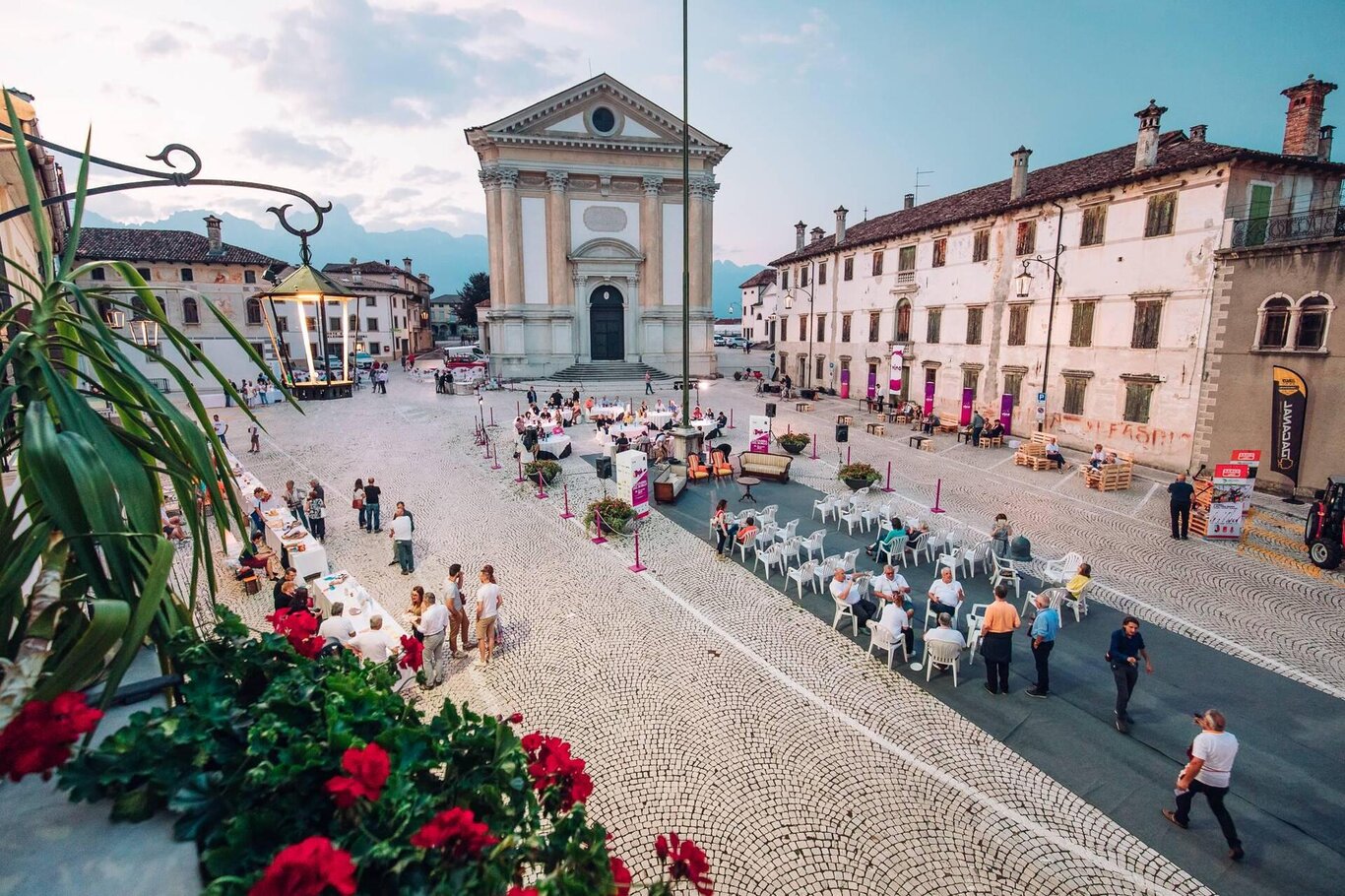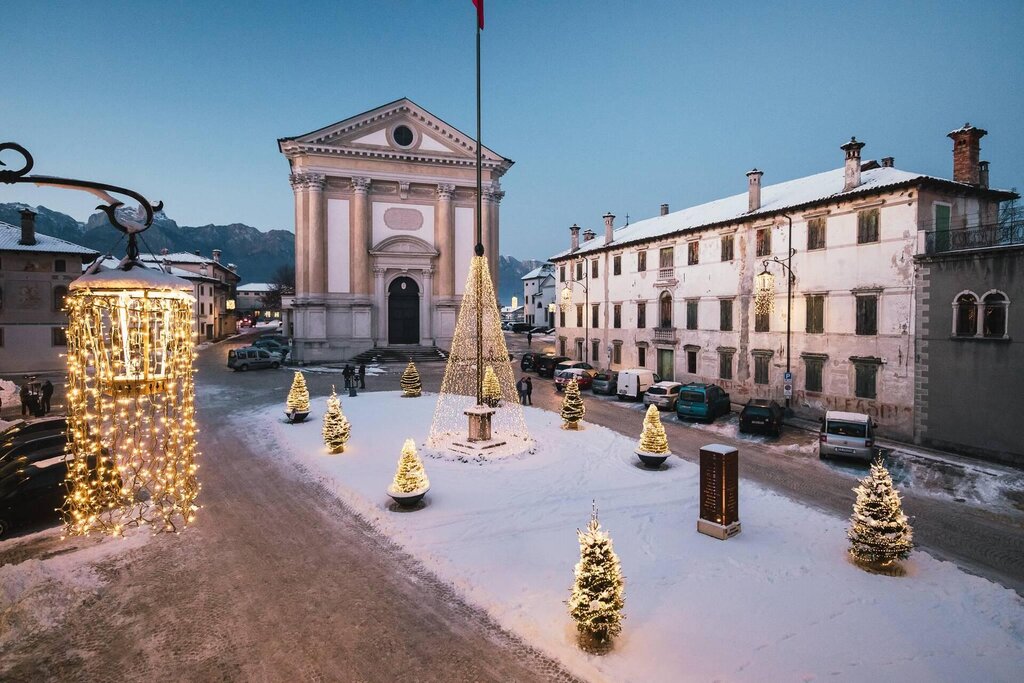The most characteristic part of the village of Mel is the square, a Venetian living room at the foot of the Dolomites, lined with houses and buildings from different eras while maintaining perfect overall coherence.
Among the most important buildings in the square stands Casa Fulcis-Zadra from the 17th century, linked to the 18th-century Palazzo Fulcis-Guarnieri-De Cal by a lintelled doorway through which, during the great event "Mele a Mel," one can access the beautiful park and stables where the market exhibition of local agricultural products takes place.
Further up, the ancient church of Addolorata and the imposing structure of the 18th-century church dedicated to Santa Maria Annunziata. On the other side of the square, the oldest building: Palazzo Barbuio-Gaio-Francescon from the 14th century with its frescoes and the Palace of the Countesses dating back to the 17th century, which was once home to the elementary schools and is now the site of the archaeological civic museum and exhibition space. The Del Zotto house leads us towards the 16th-century Municipality Palace and closing the square on the south side is the Inn Cappello, also from the 17th century.
The square extends on one side towards via Roma "la stretta" and on the other towards the ancient livestock market, now a public garden, and towards the ancient karera road which passes under the characteristic arch of Palazzo Pivetta-Stefani, now Caverzan, leading to "Ciopa," a site of discovery for artifacts now preserved at the archaeological civic museum, and towards the settlements of Nave and Follo.
All of this encapsulates, like a living room, elements from different periods harmonized and blended into an enchanting whole. The roofs, with their characteristic "coppi," stand out for their imposing chimneys typical of Venetian architecture.
In the center of the square, an ancient stone pedestal with coats of arms carved on its sides: the emblem of the Magnificent Community on the right and that of the Zorzi family on the left, with the date MDXX (1520). The pedestal supports a flagpole on which the Italian flag flies; once, the flagpole was a sturdy tree about 20m tall that needed to be replaced every 50 years. Since 1949, the current iron pole has stood. In the past, the public crier, after a triple sound of the trumpet, announced edicts to the people from the steps of the pole.


